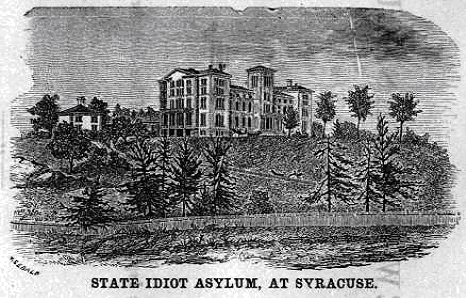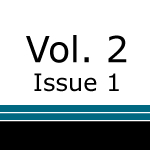October 10, 2012
An Annotated Bibliography of Literature on the Rhetoric of Health and Medicine
1996-2000
- Epstein, Steven. Impure Science: AIDS, Activism, and the Politics of Knowledge. Berkeley: U of CP, 1996. Print. Epstein employs science and technology studies theory (STS) and active research methodology (also known as participatory research, in which the researcher interacts with the subject population as a part of inquiry, to achieve the community’s desired results) to explore a particular case in which scientists, politicians, and laypeople combined different forms of expertise to construct clinical trials. These trials were designed to meet the bioethical needs of participants as well as the researchers. Specifically, Epstein interrogates the controversy surrounding the AIDS movement of the 1980s and 1990s. During these decades, patients, activists, citizens, health educators, and policy makers began to demand better healthcare options, treatment, and research, and they struggled while deconstructing and reconstructing what constituted “scientific knowledge” about AIDS: “I seek to identify . . . the linkage of power, knowledge, and order forged . . . How . . . certainty is constructed—or deconstructed . . . how knowledge emerges out of credibility struggles—and how the unusual politicization of AIDS in the United States has altered the conduct and resolution of such struggles” (2-3). The book is a classic example of work in ethical deliberative rhetoric between biomedical/scientific and popular culture.Gender, Policy, Public Discourse
- Blume, Stuart S. “The Rhetoric and Counter-Rhetoric of a ‘Bionic’ Technology.” Science, Technology, and Human Values 22.1 (1997), 31-36. Print. This article considers the advent of the cochlear implant, its rhetorical promotion in the media, and its unexpected reception. Scientists creating the device in the 1970s made a strategic alliance with mass media circuits, which in turn “reconstructed” the cochlear implant as the “bionic ear” in an attempt to persuade those in the deaf community to undergo its surgical implantation. While the medical community saw this technology as a great achievement, reaching a population that had previously been medically incurable (the totally deaf), the deaf community unexpectedly responded with a counter-rhetoric that reaffirmed their collective physiological and social identity, challenging the narrative of technological salvation suggested by early media coverage of the implant. Blume traces the process of how this counter-rhetoric was constructed, enabled, and effectively deployed, resulting in a campaign which changed the history and identity of the deaf community—the entire story spanning from the post war 1950s to 1995. Blume specializes in twentieth century technological innovation and writes from historical, anthropological, and medical perspectives in various journals outside of rhetoric.
Disabilities Studies, History, Public Discourse - Haraway, Donna. Modest_Witness@Second_Millenium. FemaleMan_Meets_OncoMouse. New York: Routledge, 1997. Print. In her fantastical and brilliant fashion, Haraway provides a feminist interrogation of the technoscientific age, surveying everything from the birth of the Internet to the genome project, demonstrating how the excess of technoscience cannot be contained by the Judeo-Christian chronotope. Working at the boundaries of cultural studies and the rhetoric of science and technology studies, Haraway considers the intersections of ownership, capitalism, science, and medicine. Her second chapter, “FemaleMan©_Meets_OncoMouse™,” is likely to be most useful to medical rhetoricians. In it, Haraway describes the creation and capitalization of an animal that exists solely to provide humans with materials for cancer research. The first patented animal in history, OncoMouse™, is genetically engineered to “naturally” and dependably develop breast cancer for the purpose of experimentation. S/he is the perfect example of the conflation of species, technology, commercial capital, and the archetypal religious scapegoat. Haraway considers hundreds of examples like this one in recent scientific and popular cultural herstory, bearing “modest whiteness”—in the style of a laughing medusa—to the technological web we’ve woven in the name of un-biased, objective, all-knowing science. She argues for a participatory democratic of the politicoscientific community in order to make visible the invisible actants and injustices in technoscientific networks.
Medical Research, Public Discourse, STS - Segal, Judy Z. “Public Discourse and Public Policy: Some Ways that Metaphor Constrains Health (Care).” Journal of Medical Humanities18 (1997): 217—31. Print. One of Segal’s earlier pieces, this article describes three metaphors that constrain health (care) policy: the body as machine, sickness as war, and health as a market good (“Public”). For example, Segal demonstrates how the medicine as war metaphor constrains the role of doctor to one who fights against disease, death, and old age, leaving no room for a narrative that allows a patient to die with dignity. On the other hand, the metaphor of medicine as business constructs patients as consumers shopping in a competitive medical marketplace, whether or not the majority of patients see themselves as such. Segal expands on these arguments in the sixth chapter of her book 2005 book Health and the Rhetoric of Medicine (annotated below).
Policy, Public Discourse - Stone, Mary Specker. “In Search of Patient Agency in the Rhetoric of Diabetes Care.” Technical Communication Quarterly 6.2 (1997): 201—17. Print. Stone expresses concern for how managed care has developed a new rhetoric for limiting patient agency within health care. As a professional medical writer, Stone is familiar with both patient and professional documents and the way that patients are rhetorically framed depending on the audience. She uses the Burkean Dramatistic method to demonstrate how, despite rhetorics of empowerment directed toward patients, physicians’ use of “compliance” and “adherence” rhetorics act as terministic screens that attempt to limit patient agency over their care “with the goal of minimizing the treatment of costly complications” (202). Because unmanaged Type II diabetes is such an expensive drain on resources, patients with this disease provide an apt case study, and stone conducts comparative textual analyses of patient education materials vs. medical articles about managing diabetes in order to make her case.
Doctoring, HCP-Patient Com - Berg, Marc, and Annemarie Mol, ed. Differences in Medicine: Unraveling Practices, Techniques, and Bodies. Durham: Duke UP, 1998. Print. Although this collection is not grounded in the field of rhetoric, it includes excellent case studies relevant to medical rhetoric. The collection seeks to expose the ways that “medicine” proliferates and multiplies the more it is investigated. Despite totalizing definitions or binaries, such as eastern and western, traditional and biomedical, allopathic and homeopathic, actual observation of healthcare practices and performances reveal complex differences and contextual variables. The authors investigate these differences not by segregating discourse from science but by “combin[ing] theoretical questions with empirical materials” (8). Even so, many of their contributors focus on the rhetorical construction of linguistic or subject categories, such as pain, frames of judgment, schematics, patient classifications, and the material realities that complicate and multiply these constructions. Mol and Berg’s work is closely related to Science and Technology Studies, Actor Network theory, and Complexity Theory.
STS - Greenhalgh, T. “Narrative Based Medicine in an Evidence-Based World.” British Medical Journal 318.7179 (1999): 232—35. Print. This article is the last in a series of five articles published in BMJ dedicated to narrative medicine (in the “Education and Debate” section). Each of the articles is adapted from Trisha Greenhalgh and Brian Hurwitz’s Narrative Based Medicine: Dialogue and Discourse (1998), a book written for an audience of (academic) doctors, persuading them of how to instill critical listening and literacy practices into their clinical practice. Their book and article series makes an excellent example of how English scholarship and research can be presented to a medical audience in more than one fashion. The first article in the series answers the question “Why study narrative?”; the second considers narrative approaches to mental health; the third discusses linguistic/talk analysis of stories in clinical practice; the fourth explains how narrative theory and reading skills assist in the development of medical ethics; and the fifth, listed above, regards the balance between narrative and evidence based medicine.
Doctoring, Ethics, Narrative - Lingard, Lorelie & Richard J. Haber. “Teaching and Learning Communication in Medicine: A Rhetorical Approach.” Academic Medicine 74.5 (1999): 507—10. Print. Lingard and Haber argue that students in medical school should receive specific training in oral communication because, according to linguistic theory, “rhetoric directs attention to the relationship between what [doctors] learn to say and what they learn to value, believe, and practice” (Abstract). Therefore, being aware of ways of speaking about medicine would in turn affect a doctor’s way of thinking about medicine. Over the next ten years following this publication, Lingard designed curriculum for medical students based in rhetorical theory and reported her findings in a 2007 article entitled “‘The Rhetorical Tern’ in Medical Education: What Have We Learned and Where are We Going?”
Doctoring, Pedagogy - Heifferon, Barbara, and Stuart Brown, eds. Technical Communication Quarterly, Special Issue on Medical Rhetoric 9.3 (2000). Print. This special issue, edited by two University of Arizona alums, is the first ever collection of articles gathered under the name “medical rhetoric” (245). Heifferon and Brown “offer a tentative definition” of medical rhetoric as “how we communicate health care concerns” including everything from ancient attempts to describe pain, to current healthcare policy (247). As is true in technical writing and the rhetoric of science, the editors of this collection sought to “rectify the historic split between science and rhetoric” and to “address and change [negative] perceptions [of rhetoric] while maintaining an inclusive and interdisciplinary approach to all kinds of textual and medical language study” (246). The five articles chosen for the collection are all textual studies.
Genre, PTWC - Bell, Heather D., Kathleen A. Walch, and Steven B. Katz. “‘Aristotle’s Pharmacy’: The Medical Rhetoric of a Clinical Protocol in the Drug Development Process.” Heifferon 249—69. Bell, Walch, and Katz’s article considers the development process of drug protocols. They found that, although the rhetorical construction of clinical protocols is highly complex and serves many audiences and purposes, the specific guidelines the FDA provides about composing such documents are vague. The FDA’s lack of specific directions reveal an assumption that scientific “facts” are self evident and easy to present once “discovered” by researchers: no rhetorical instruction necessary. The authors, in response, offer their own rhetorical heuristic for composing drug protocols which attends to the genre’s rhetorical situation.
Pharmacy, Genre, PTWC - Hausman, Bernice L. “Rational Management: Medical Authority and Ideological Conflict in Ruth Lawrence’s Breastfeeding: A Guide for the Medical Profession.” Heifferon 271—89. Print. Hausman performs a cultural studies analysis of breastfeeding management by examining a medical guidebook for physicians on the topic. She finds that the socially over-determined meaning of breastfeeding, and the doctors’ need to acknowledge the psychological impacts this has on mothers, ultimately threatens physicians’ authority as rational healthcare managers. This threat highlights the doctor’s lack of control over the social choices of women. She argues for medical interventions that take the material conditions of women into account as HCP’s seek to persuade women of healthy medical practices.
Gender, HCP-Patient Com - Munger, Roger. “Evolution of the Emergency Medical Services Profession: A Case Study of EMS Run Reports.” Heifferon 329—46. Print. Munger investigates the history of the paramedic profession by way of medical run reports and how they evolved over time. The reports reflected a need for professional skills training from 1965-72, a need for system wide monitoring from 1973-80, a greater value for patient narratives from 1980-84, and a more diverse professional audience from 1985-95. Munger notes the growing instability of the genre with the advent of electronic forms of communication and predicts the value of a full switch to more fluid electronic records.
Genre, History, PTWC - Salager-Meyer, Francoise. “Debate-Creating vs. Accounting References in French Medical Journals.” Heifferon 291—310. Print. Salager-Meyer surveys 90 French medical articles written between 1810 and 1995 specifically analyzing the rhetorical role that citation practices played over time. She finds that in the late nineteenth and early twentieth-century, references were more discursive, personal, and openly argumentative. In the later parts of the twentieth century, references took on a more structured purpose (“gap filling”) and tone (passive). This structure and tone allowed the authors to appear objectively distanced from material and for the material to appear more “fact” oriented and less rhetorically constructed and debatable. Salager-Meyer notes that her findings match those of similar studies which examined American reference trends.
Genre, History, Medical Research - Welch, Kathleen. “Interdisciplinary Communication in a Literature and Medicine Course: Personalizing the Discourse of Medicine.” Heifferon 311—28. Print. Welch presents an ethnographic study of medical students in a literature and medicine class. She argues, based on her observations and textual analysis of the students’ works, that “reflective writing enabled them to conceive medicine as an interpretive, personal, and idiosyncratic activity rather than as a stagnant diagnosis-based process” (311). Welch’s work is an example of how narrative medicine paved the way for medical rhetoricians, especially in educational healthcare settings.
Doctoring, Narrative, Pedagogy - Lay, Mary, Laura Gurak, Clare Gravon, and Cynthia Myntti. “Introduction.” Body Talk: Rhetoric, Technology, Reproduction. Madison: U of Wisconsin P, 2000. 3–26. Print. In the introduction to their collection, Lay, Gurak and Gravon highlight the dangers of receiving reproductive technologies with a rhetoric of wonder and hope “instead of a rhetoric of concern and ethical consideration” during a time of often uncritical technological determinism (5). The authors consider reproductive technologies a form of what Foucault calls “biopower,” which attempts to subjugate and control bodies through normalization. The authors provide close rhetorical analyses of various forms of “bio-power and its relationship to authoritative knowledge systems, what we call body talk—how language constructs bodies and reproductive technologies” (6).
Gender, STS - Lay, Mary. The Rhetoric of Midwifery: Gender, Knowledge, and Power. New Brunswick, NJ: Rutgers UP, 2000. Print. This book describes Lay’s rhetorical study of a hearing conducted between 1991 and 1995 by the Minnesota Department of Health and Board of Medical Practice, meant to discuss the legal status of practicing, direct-entry midwives. Lay’s analysis took advantage of a “rare opportunity to study medical and midwifery practices in conflict, the use of discourse to maintain professional jurisdictions, the exclusive claim to scientific knowledge and discourse by dominant professions, and the cultural status granted to women’s experience and knowledge of their bodies” (ix). The breadth of the study, founded on principle questions in rhetoric of science, Women’s Studies, and cultural studies, exemplifies active research practices as Lay takes part in discussions between “established physicians . . . nurses and nurse-midwives . . .malpractice lawyers, and direct-entry midwives[,]” all of whom are “sitting across the table from each other for the first time” (Lay ix).
Doctoring, Gender, Policy




 Jessica Masri Eberhard is a PhD student in Rhetoric and Composition at the University of South Florida. Specializing in the Rhetoric of Medicine, her research investigates clinical ethics through actor network theory. She teaches composition and works at her university writing center while conducting ethnographic research at a nearby teaching hospital.
Jessica Masri Eberhard is a PhD student in Rhetoric and Composition at the University of South Florida. Specializing in the Rhetoric of Medicine, her research investigates clinical ethics through actor network theory. She teaches composition and works at her university writing center while conducting ethnographic research at a nearby teaching hospital.